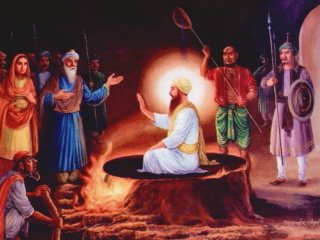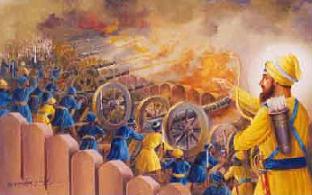Yesterday I was invited to do a talk at my old Sixth Form College at their annual RE Day for students aged 17. The theme of the RE Day was “DEALING WITH LIFE.” The teacher rang me a few days before the event and told me to take class and cover the topic “How to deal with troubled people.” A Christian guest speaker was given the topic of “How to deal with Business” in relation to Christian ethics. And a Muslim lady who works with the school and another teacher together covered the topic of “Segregation and Apartheid” looking at South Africa and Palestine.
It was a bit weird going back to my old school. As usual the children walking to their classes were staring at me. I just smiled and walked on. I was given a classroom and my laptop was hooked up to the projector. There were three groups, which were divided amongst the three different classes. So the groups rotated around the different classes. The group size was about twenty or slightly more students, which were all Gore (apart from one Pakistani Muslim girl in one the groups). All three groups of students, which I took, were well behaved, paid attention and showed interest.
All apart from one of the groups didn’t know who Sikhs were, what is Sikhi and why I am wearing a Kirpaan and Dastaar. So, I began with introducing myself and then introducing Sikhi by explaining the basics and going through the Kakkaars (Articles of Faith), as some students looked bit startled looking at my Kirpaan. The introduction to Sikhi was the same as I gave the Inter-Faith event, which I wrote about in the end of May, so you can read about that here.
The main presentation was divided into three sections. Firstly, using examples from the lives of the Sikh Gurus of how to deal and respond to troubled people; Secondly, reflecting on some personal experiences; and then to end with, the students could discuss what they felt and share their experiences with troubled people.
Below is a summary of my talk/class:
I then went through several very short Saakhis (stories) from the Guru Sahibs lives and how the students would have responded to the troubled people Guru jee faced and then share with them how Guru jee actually responded:
To be continued...
It was a bit weird going back to my old school. As usual the children walking to their classes were staring at me. I just smiled and walked on. I was given a classroom and my laptop was hooked up to the projector. There were three groups, which were divided amongst the three different classes. So the groups rotated around the different classes. The group size was about twenty or slightly more students, which were all Gore (apart from one Pakistani Muslim girl in one the groups). All three groups of students, which I took, were well behaved, paid attention and showed interest.
All apart from one of the groups didn’t know who Sikhs were, what is Sikhi and why I am wearing a Kirpaan and Dastaar. So, I began with introducing myself and then introducing Sikhi by explaining the basics and going through the Kakkaars (Articles of Faith), as some students looked bit startled looking at my Kirpaan. The introduction to Sikhi was the same as I gave the Inter-Faith event, which I wrote about in the end of May, so you can read about that here.
The main presentation was divided into three sections. Firstly, using examples from the lives of the Sikh Gurus of how to deal and respond to troubled people; Secondly, reflecting on some personal experiences; and then to end with, the students could discuss what they felt and share their experiences with troubled people.
Below is a summary of my talk/class:
“Put your hand up if you have ever faced trouble in your life? Put your hand up if you have ever faced problems in your life? You will find that everyone in the world, from the greatest man to the smallest man, holiest man to the normal person, all face problems and troubles. However, what makes the difference between a successful person and a failure person is how they DEAL with their problems. The successful person overcomes their problems and troubles. They use their stumbling blocks as their building blocks. However, the failure person in life DROWNS in their problems. They weap, wail, cry and moan and SINK in their troubles. You have a choice whether to sink in life or whether to be successful in life. The choice is yours.”
I then went through several very short Saakhis (stories) from the Guru Sahibs lives and how the students would have responded to the troubled people Guru jee faced and then share with them how Guru jee actually responded:
The third Guru, and the behaviour of Bhai Datu Jee
When Guru Amar Daas Sahib Ji became Guru, out of rage and jeaolsy the son of the Second Guru kicked the elderly Guru Sahib. How did the Guru respond? The Guru grabbed Bhai Datu Jee’s foot and said “I hope my hard bones have not hurt you.” Guru Jee’s sweetness and humility were a slap in the face of Bhai Datu Ji and he fell at the feet of the Guru.
Baba Sri Chand Jee meeting the Fourth Guru
The elder son of Guru Nanak Sahib Jee went to Amritsar to visit Guru Raam Daas Sahib Jee, the fourth heir to the throne of Guru Nanak Sahib Jee. Baba Sri Chand Jee tried to belittle and laugh at the Guru. He said, “O Raam Daas! Why is your beard so long?” The Guru replied “I have a long beard to wipe the feet of holy men like you.” The Guru Sahib’s humility hit Baba Sri Chand Jee who feel at the feet of Guru Sahib and he said; “Now I know why I didn’t become chosen to be Guru and instead you are sitting on my father’s throne.”
The Sixth Guru becoming friends with Jahangeer
Jahangeer was the one who gave orders for the torture and martyrdom of Guru Arjan Dev Jee, however later on Guru Hargobind Jee becomes Jahangeer’s friend and goes hunting with him. How is this possible? Someone has killed your father and how can you go hunting with them? It is because the Jahangeer made a GENUINE APOLOGY. No one is perfect. Jahangeer repented and asked forgiveness. The Guru forgave him, showing that if someone makes a genuine apology (not just saying “sorry”) then one should forgive and move on. At the same time Guru Sahib responded to Guru Arjan Dev Jee’s Shaheedi by embracing weapons and using the Shaheedi as a turning point for Sikhs to become armed with weapons.
The Tenth Guru and Aurangzeb
Guru Gobind Singh Jee’s father, two elder sons aged 15 and 17, two younger sons aged 5 and 7, and his elderly mother was martyred under the reign of Aurangzeb. How would we react if our family is murdered and killed? Become enraged? Try to commit suicide? Become depressed? However, the Guru remained in high spirits and wrote the ‘Zafarnama’, the 'LETTER OF VICTORY'.
In this letter Aurangzeb was complimented, but then his evil acts were presented and how in the name of religion he murdered people, in the name of God he tortured and martyred a 5 and 7 year old etc. And at the end he wrote, “Even though you have done all this, I bear no enmity for you as a person. It is your acts which are evil.” Just by reading this Aurangzeb was hit with the SIMPLE TRUTH and he perished in shock. Sometimes wise parents sit naughty children down and explain “You have done x, y or z, and as a result of this you have caused pain. You have done x, y, and z and the consequence of this is….” The child is calmly told what he has done wrong without judgment and the child is made to realise his wrongdoings and usually ends up crying, repenting and saying “I’m sorry.”
When Guru Gobind Singh Jee fought in battles, he would spray the aggressors with arrows. These arrows would be coated with GOLD. Why do this? It is so that the wounded soldier could use the gold-coated arrowed tip for MEDICATION if he survived or if he perished his family could use it for his LAST RITES. This illustrated that even in war Guru Sahib said that no one is his enemy, no one is evil, it is the PERVERSION OF THE MIND which is evil, it is the act which is evil.
What Do We Learn?
The Sikh Gurus showed that each situation requires a UNIQUE RESPONSE depending on the circumstances. For this one needs an INTUITIVE SENSE and needs to be SELF-AWARE and have awareness of the surroundings and situation. The unwise person will fall in the trap of ACTION followed by simultaneous REACTION. For example, someone slaps you so you unthinkably slap back. The wise person stops, thinks and uses INNOVATIVE WAYS of dealing with troubled people which requires self-awareness and awareness of one's surroundings, which can be achieved through MEDITATION and learning from WISDOM (i.e. Guru Sahib).
To be continued...






Comments
I will email you the Powerpoint.
Guru Rakha
Thanks for your comments.
I am aware that some people question that Guru Gobind Singh jee wrote Zafarnama and some deny that Guru Gobind Singh Jee wrote Jaap Sahib and any other Baani and don't believe in Khande-Pahul da Amrit. However, thats their "personal" vichaar, not views of the Guru Panth. According to Sri Akaal Takht Sahib the Zafarnama is by Guru Gobind Singh Jee. The Akaal Takht Sahib has prohibited any discussion or debate on "Dasam Granth" or "Dasam Paatshaah di Bani".
I agree that we should not accept every Saakhi we are told with our eyes closed. The litmus test is Gurbaani. If a Saakhi doesn't comply with the teachings of Guru Granth Sahib Jee then we know its false.
In regards to Baba Sri Chand jee - Although he disobeyed Guru Nanak Sahib jee, according to history he was still a "spiritual person" but not a Gurmukh (who accepted the Dharam of Guru Nanak Sahib Jee"). I don't find anything Manmat in the story about the beard. It is from what I have read in books and hear in Katha by Katha-vaachiks.
Guru Rakha.
Thank-you for sharing wonderful attitudes of the gurus.
May we become like them
Regards
Kulpreet Kaur